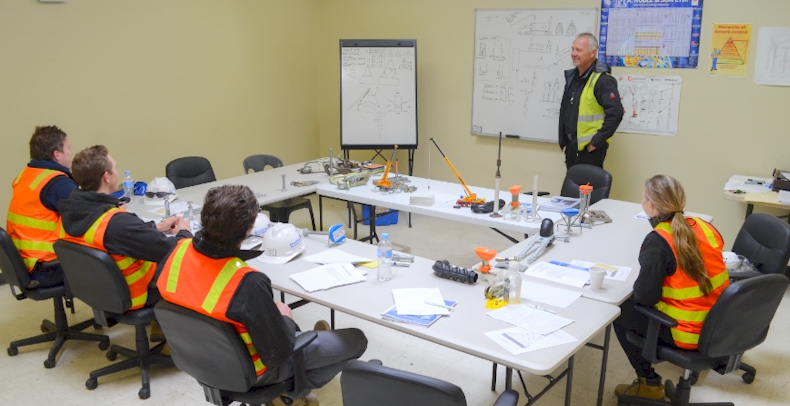
Training is all about skill transfer, you can talk and talk, sometimes you just have to go and see it for yourself. Training needs to be tailored to the delegates needs and the individual circumstances to get the best results.

Combining classroom and practical aspects of a work environment is always popular. Practical personnel require practical training.

Group training sessions have great advantage, sharing ideas and perspectives has real value.

Training comes in a variety of forms. Often requiring hands-on, touch, hear, taste or smell.
Training & Development
Staff Competencies
Your organization should establish a process for assessing existing staff competencies against changing business needs and prevailing trends. Check for evidence that all staff which work under your organization’s control are competent, and that evidence of continuing competence are maintained and documented.
Define competency requirements by:
Actively identifying training requirements
Actively delivering training
Actively monitoring the effectiveness of training
Training should never be performed as a knee-jerk reaction with no real objectives, but instead, it should be geared toward empowering each employee with the skills and knowledge they need to move the organization forward and enhance customer satisfaction.
Staff should be trained to improve their skills and overall performance. Comparing existing performance to post-training performance is a simple way of assessing the effectiveness of training.
Consider making provision for the following audit questions:
What training is given to new employees?
How is training evaluated?
What steps are taken when training is deemed ineffective?
What types training records are maintained?
Should I Document Competence and Awareness?
It is not a mandatory requirement to document your competence, training, and awareness process, but since the competency of your staff is vital to achieving product and service conformance, you should always look to define and control this process. The implementation of a competence, training and awareness procedure should be a priority of all businesses.
What’s Needed to Document Competence and Awareness?
Develop and implement a procedure that defines:
The responsibilities for coordinating training activities
How training needs are determined
How training is delivered
How training is evaluated
What records are maintained
Measuring Effectiveness
Training alone is not sufficient to demonstrate competence; this must be demonstrated through tests, observations, results, etc. Auditors need to find objective evidence in order to determine that the competency requirements have been met.
If the people are found not to be competent, your organization is required to take action. The actions taken need to be evaluated for effectiveness in raising competence to the required level. Examples of action may include remedial training, recruitment, or the use of external people in order to acquire the necessary competence.
Identification of employee training needs is typically the first step in developing a competency-based training program. In addition to existing workers, new hires, temporary workers, and outside contractors must be included when identifying training needs. Your organization must demonstrate that the training needs for these employees were identified.
After developing a list of these employees, the management representative or human resources manager should establish the appropriate training program for each person based on the type of employee interaction with each significant impact or risk.
Even though some personnel may have the same job, the type or level of training may vary according to each person’s past education, training, and experience.
A register containing information on specified levels of education, training, and experience must be established for each employee whose work is involved with any significant impact. The planned training program for each individual then should be listed. The training sessions should, at a minimum:
Make the employee aware of the aspects and hazards, and the impacts and risks associated with their work.
Include training required by applicable regulatory requirements and management system requirements.
Include training necessary to obtain/retain required licenses or registrations.
Emphasize responsibility for minimizing significant impacts and risks associated with their work.
Identify potential consequences of departures from specified operating procedures.
Address the benefits of improved personal performance.
Training options may be as simple as on-the-job training, administered by senior/experienced members; formal training, including classroom instruction; training provided by external consultants.
For some situations, commercially available training courses may be another alternative. Additional or customized training activities specific to individual needs, job descriptions, regulations and goals may be necessary depending on the existing skill level of each employee.
